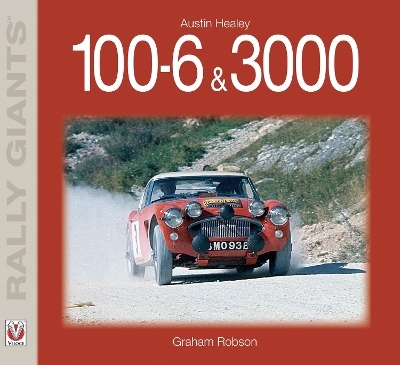
Austin Healey 100-6 & 3000
Veloce (Verlag)
978-1-84584-128-7 (ISBN)
- Titel ist leider vergriffen;
keine Neuauflage - Artikel merken
In nine eventful years - 1957 to 1965 - the six-cylinder-engined Austin Healey evolved into a formidable and increasingly specialised rally car. By any standards, it was the first of the "homologation specials" - a type made progressively stronger, faster, more versatile, and more suitable for the world's toughest International rallies. Though the motorsport foundations had been laid by the Healey Motor Co. Ltd, the work needed to turn these cars into rock-sold 210bhp projectiles was almost all completed by the world-famous "works" BMC Competitions Department at Abingdon. It was because of their vast experience that the "Big Healeys" as they were always affectionately known - became fast and tough, nimble yet durable, so that they were capable of winning major events wherever traction could be assured. Not only did the "works" Austin Healeys win some of the world's most famous events - including Liege-Sofia-Liege, Spa-Sofia-Liege and the French and Austrian Alpine rallies, but they were also supremely fast on events like the Tulip, and came so close, so often, to winning their home event, the British RAC Rally, which traditionally ended the season. Not only did these cars turn their drivers - Pat Moss, Donald Morley, Rauno Aaltonen, Timo Makinen and Paddy Hopkirk among them - into heroes, but individual cars seemed to take on a character and reputation of their own. This book lists each and every success, each and every notable car, and traces exactly how the machinery developed, and improved, from one season to the next. Over time, the "works" cars not only adopted aluminium cylinder heads and body panels, much-modified chassis, transmission and exhaust systems, but they also became supremely strong and could withstand a true battering on the world's toughest events. This book relates how the cars were improved by the engineers, how the drivers came to love their heavy and sometimes self-willed steeds, and how the management team got the most out of everything - machinery, personnel, drivers, and regulations. . Heavily illustrated and packed with technical detail this book will make a welcome addition to any motorsport fans library.
After a varied career in the automotive industry Graham Robson has gained a worldwide reputation as a motoring historian, and has more than 160 books to his credit. Born in 1936, and educated at Ermysteds Grammar School in Yorkshire, Graham then went on to study Engineering at Oxford University. He joined Jaguar Cars as a graduate trainee, becoming involved in design work on the Mk II, E-Type and Mark X. Beginning as a hobby, he became a rally co-driver, eventually joining the Sunbeam 'works' team in 1961, and took part in rallies up to International level (once with Roger Clark), but stopped rallying by 1968. During this time he joined Standard-Triumph in Coventry, in 1961, as a Development Engineer, mainly on sports car projects. He then ran the re-opened 'works' motorsport department from 1962 to 1965, this being the period of the birth of Spitfire Le Mans cars, TR4, Vitesse, Spitfire and 2000 rally car developments. Graham Robson’s writing began with rally reports for magazines which evolved into a job with Autocar from 1965-1969. He was recruited back to industry at Rootes to run the Product Proving department, then after a brief period in 1972 as technical director of a safety belt company, became an independent motoring writer. Graham has lived 'by the pen' and 'by the voice', not only writing but commentating, presenting and organising events of all types.
Foreword Introduction The car and the team - Inspiration - The Big Healey's importance in rallying - Abingdon - the home of the works rally team - The Big Healey - mountain master - Facing up to rival cars - Homologation - meeting the rules - Building and homologating the 3000 - Engineering features - Motorsport development and improvements - Structural changes - Engine - Transmissions - Aluminium panels - Was the Big Healey unique? - Building and running the works cars - C-Series engines - Personalities and star drivers Competition story - 1957 - 1958 - Safety - what safety? - 1959 - The arrival of the 3000 - 1960 - 1961 - 1962 - Pace notes - Spa-Sofia-Liege - 1963 - 1964 - 1965 - 1967 - 1965: was the Big Healey at its limit? - Mission impossible? A successor to the Big Healey? Major European rally successes Works rally cars (and when first used) Index
| Erscheint lt. Verlag | 4.10.2007 |
|---|---|
| Reihe/Serie | Rally Giants |
| Sprache | englisch |
| Maße | 210 x 195 mm |
| Gewicht | 430 g |
| Themenwelt | Natur / Technik ► Fahrzeuge / Flugzeuge / Schiffe ► Auto / Motorrad |
| ISBN-10 | 1-84584-128-X / 184584128X |
| ISBN-13 | 978-1-84584-128-7 / 9781845841287 |
| Zustand | Neuware |
| Haben Sie eine Frage zum Produkt? |
aus dem Bereich


